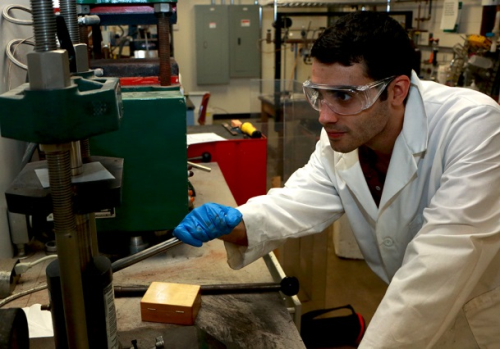
The low-toxicity, high-strength, high-density material could potentially replace the depleted uranium in armor-piercing projectiles. According to the researchers, it could become self-sharpening as it shears off material and maintains a sharp nose at the penetrator-target interface.
Depleted uranium poses a potential health hazard to soldiers and civilians, while normal tungsten would mushroom or blunt on impact. "Tungsten by itself is exceptionally strong and hard. We put in other alloying elements to make it so that we can consolidate it into this bulk object," said MIT materials science and engineering graduate student Zachary C. Cordero, who is developing the material.
He discovered that a tungsten alloy with chromium and iron (W-7Cr-9Fe) was significantly stronger than commercial tungsten alloys. The improvement was achieved by compacting metal powders in a field-assisted sintering hot press, with the best result, measured by the fine grain structure and highest hardness, achieved at a processing time of 1 minute at 1,200°C. Longer processing times and higher temperatures led to coarser grains and weaker mechanical performance. Sub-scale ballistic tests of the tungsten-chromium-iron alloy have also been performed.
Ultrafine grains
The researchers first made nanocrystalline powder which was then consolidated into a bulk object. However, consolidation requires exposing the material to higher temperatures. Heating the alloys to high temperatures can cause the grains, or individual crystalline domains, within the metal to enlarge, which weakens them. Cordero was able to achieve ultrafine grain structure of about 130 nanometers in the W-7Cr-9Fe compact, confirmed by electron micrographs. "Using this powder processing route, we can make big samples up to 2 centimeters in diameter, or we could go bigger, with dynamic compressive strengths of 4 GPa (gigapascals). The fact that we can make these materials using a scalable process is maybe even more impressive," Cordero said.



